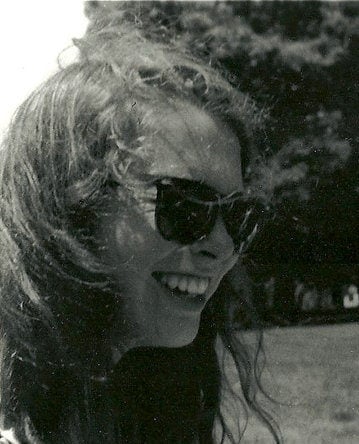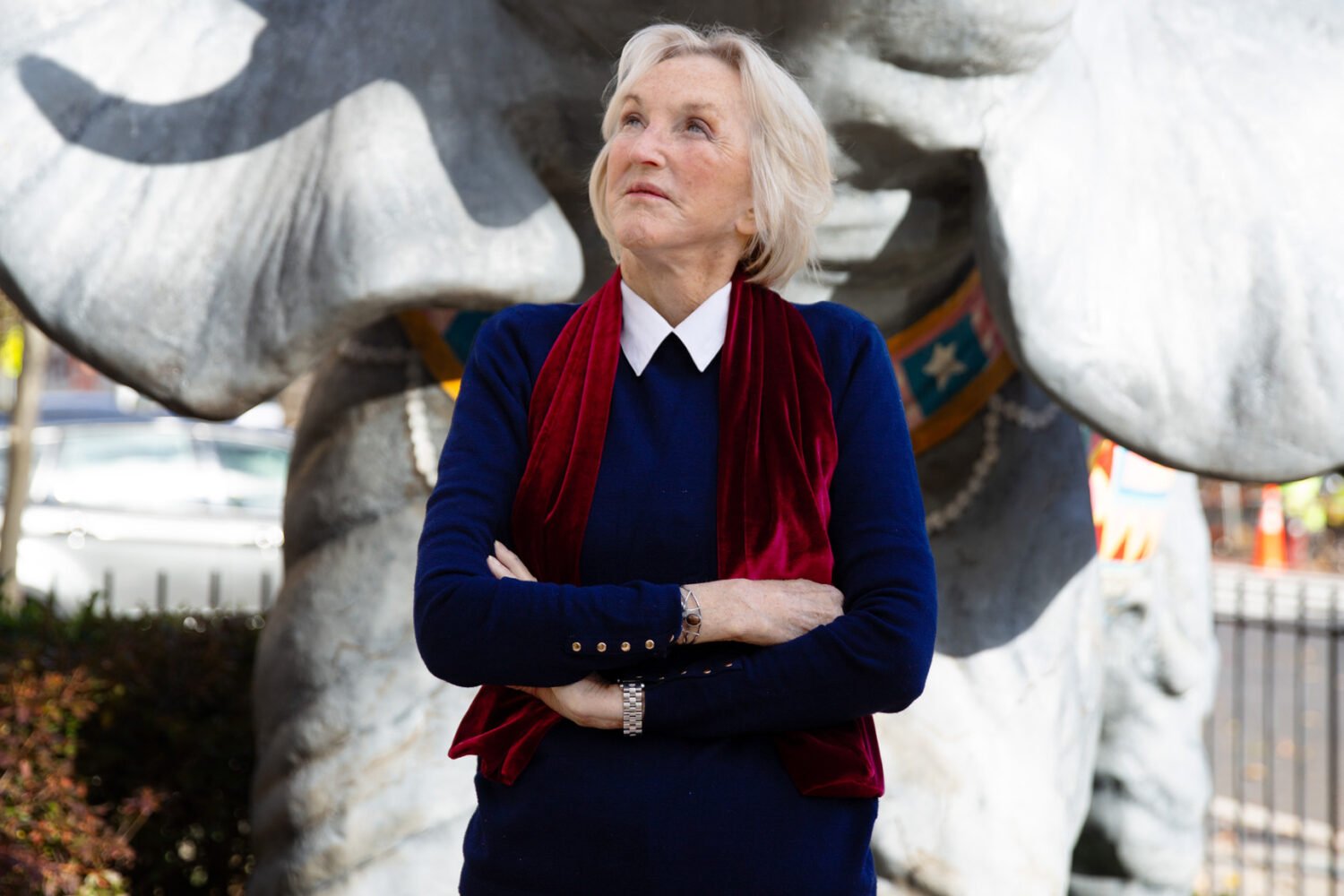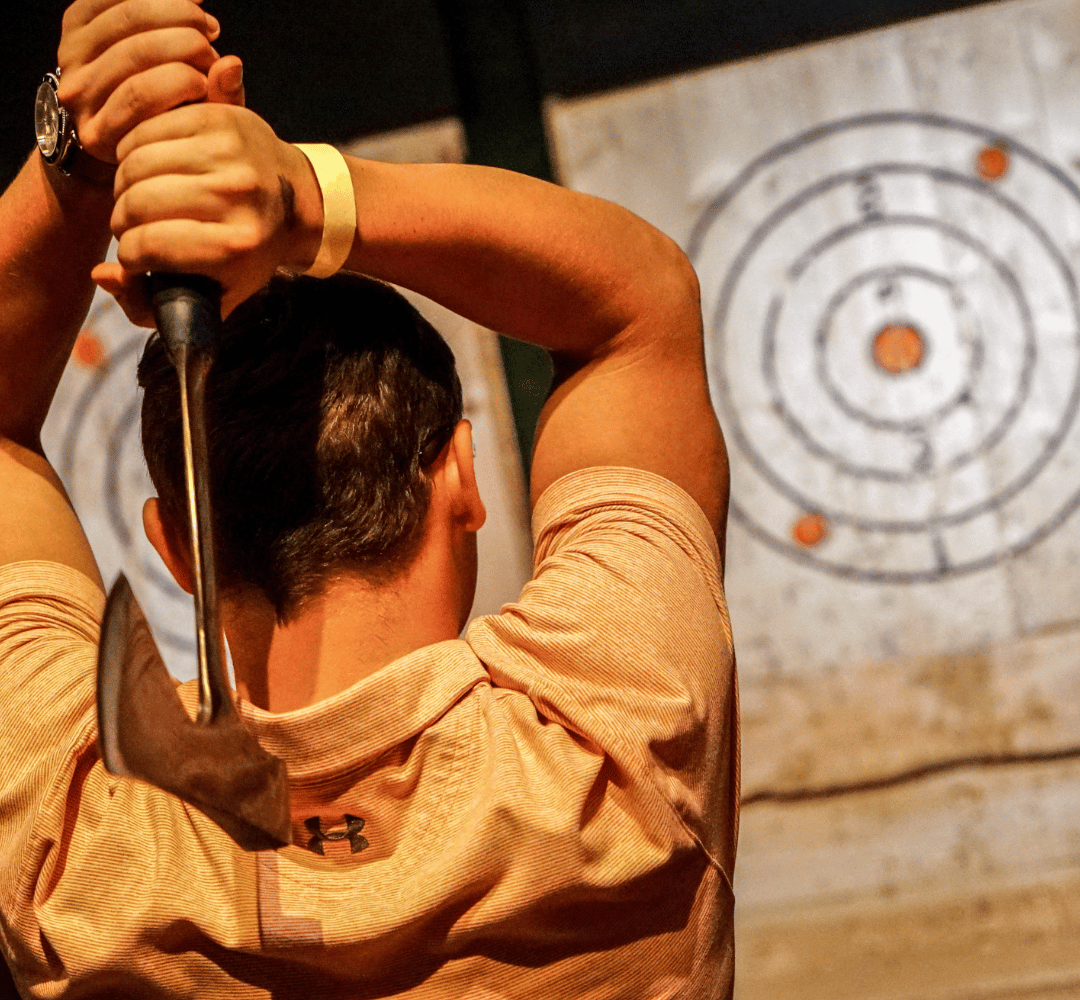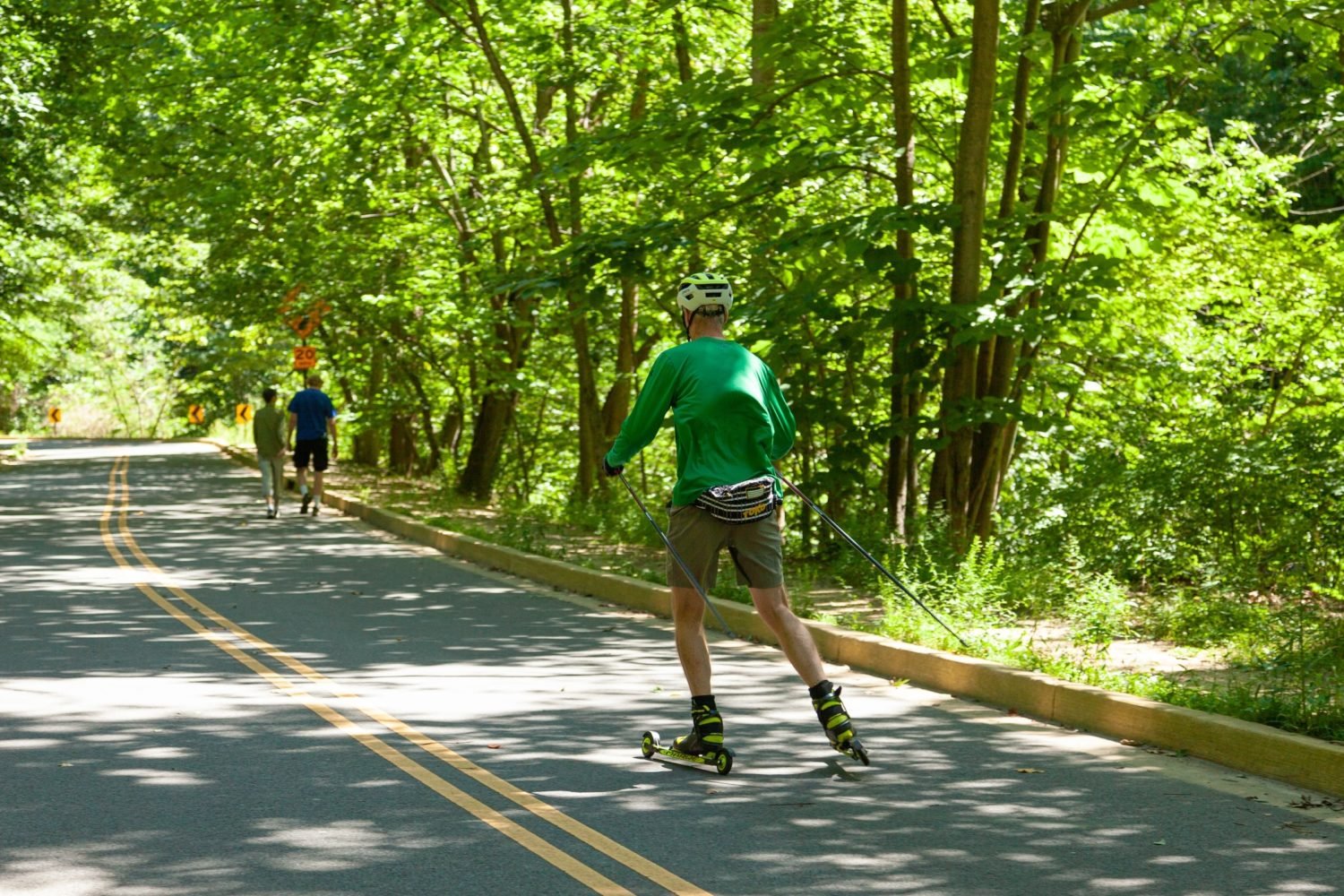Lying in a flotation device must be what it’s like to be dead, or at least shot into space naked: total darkness, total silence. Just your body suspended in an expanse of nothing, like a blob in a lava lamp.
If that sounds existential, it’s because I had a lot of time to think about this sensation during my hourlong session at Soulex, a float spa in DC. I climbed into a large clamshell filled with Epsom-salt-infused water, kind of like a reverse “Birth of Venus,” except this device bears an eerie resemblance to my retainer case. It’s meant to be a sensory-deprivation experience, in which you can clear your mind and meditate. Or, in my case, drift into a state of semi-slumber.
This kind of thing—dropping $100 to spend 60 minutes bobbing in water like a human dumpling in broth—is a byproduct of our societal obsession with self-care. Due to the collective trauma of the past few years and the inadequacy of America’s mental-healthcare infrastructure, more people are exploring ways to cope, according to Pooja Lakshmin, a George Washington University assistant professor of psychiatry and author of the book Real Self Care: “The ways in which the mainstream system has failed patients creates a vacuum,” she says. The wellness industry, which the Global Wellness Institute estimates will be worth nearly $7 trillion by 2025, is eager to fill it.
The industry is expansive. You have things that would feel at home in Gwyneth Paltrow’s Goop universe, such as reiki healing and guided mushroom trips. You have tools for physical care, including the swampy green drinks hawked by TikTokers and the $2,500-a-pop Prenuvo MRI-scan machine. Wellness vocabulary has permeated the mundane. Now you’re no longer taking a stroll, you’re going on a “hot girl walk.” You’re not simply buying a latte, you’re engaging in “little treat” culture. Everyday activities and purchases are being rebranded as a means of contributing to your health, of claiming something for yourself in an increasingly volatile world.
While self-care staples such as a good night’s sleep or moderate exercise are legitimately productive, the issue is that some things are being sold as imperatives. According to the wellness hive, it’s necessary to drop a hundred bucks on a facial-toning wand, and you simply must spend $2,000 on that surf-yoga retreat so you can “learn to ride the waves of life, brah!” Some wellness buzzwords are dubious pseudoscience peddled by influencers cashing in on a #sponsored post. In the worst-case scenario, heeding bad advice can impact your health, says Lakshmin—think opting for trendy supplements instead of taking antidepressants, or using them without consulting a doctor.
The world of self-care can sometimes be exclusionary. “Wellness is deeply intertwined with capitalism and white supremacy,” says Lakshmin. The cure-alls are largely advertised to women, she explains, as they’re the people most often failed by a system without safety nets such as national paid parental leave. And it’s specifically wealthy white women who are most likely to have the time and resources to pursue such endeavors.
All of this was on my mind post-float as I rinsed in my private room’s spa-like shower. Did I feel relaxed? Of course. I’d just spent an hour submerged in the void, no Slack pings or phone-calls-that-could-have-been-emails to bug me. I felt great! It did gnaw at me, though, that I had to pay $100, drive across town, take an hour out of my day, and shut myself off from the world in a bivalve coffin to feel this at ease on a weekday—a privilege not available to everyone.
Seeing the Forest for the Trees
Up next on my wellness regimen was forest bathing. The practice originated in Japan as a way to improve mental health, and it’s basically a mindful form of hiking. A guide leads participants on a nature walk, instructing them to observe their surroundings with heightened awareness. I signed up for a $30 class at Hillwood Estate on a rainy Saturday, and the other patrons were exactly the kind of people you’d expect to drag themselves out of bed on a dreary morning to stare at leaves, with floppy hats (the kind preferred by botanists in the Amazon) bumping against their ears and performance-gear pants swishing above their Keens.
For our first exercise, we closed our eyes and listened intently to nature. Facing a bush, I felt as if I’d been dropped into an Enya song, or one of those early-2000s screensavers with Pacific Northwest vistas. (Okay, fine, I was really thinking about the scenery from Twilight.) In this wooded swath of DC, it was mostly quiet, save for fat raindrops tapping on leaves and birds singing.
Our next activity consisted of focusing on colors in a wildflower meadow, after which we strolled through an aquatic garden, paying attention to the way water rushed across the rocks. As I got back into my car, zooming to the bacon-egg-and-cheese bagel that awaited me, I took stock. I’m someone who enjoys going on walks and being outside, but forcing myself to slow down and take in my surroundings resulted in a new level of after-walk contentedness. But, as with the float pod, it troubled me that I needed to pay money to feel this way.
My final undertaking was a sound bath—a meditation using vibrations from singing bowls—at the Del Ray studio Yoga in Daily Life. Our teacher knelt before an array of rainbow bowls, instructing us to close our eyes. She began to play them, each bowl letting out a different note. The low ones vibrated in my skull with a concentrated frequency. The high ones left sunbursts of light on the insides of my eyelids. It was surprising: I was actually somewhat emotional lying in a roomful of strangers as these deep sounds echoed. Sure, it felt sappy—we are all one, yadda yadda yadda—but it also felt special to be among people mindfully concentrating on the same thing. It made me feel present and unusually aware in my body. That is, until I let out a large snort, the kind my dad makes during a nap, and I realized I’d actually been asleep for a chunk of the experience.
As class ended, I rolled up my mat, feeling a bit like a dumbass for spending $20 to nap (yet again). I pushed into the brisk fall air and thought about each of the activities I’d done. Would I do them again? Sure. Would I pay for them if my job weren’t footing the bill? Less sure. True, I’d felt happy and rested after each. So why did I feel a little dubious?
Lakshmin posits that external methods such as forest bathing or sound baths can be useful tools, but to truly see lasting benefits, you must use them alongside internal practices—setting boundaries, practicing self-compassion, determining your values, and asserting power over your life. It’s soothing to think we can wipe our brains clean of any anxiety and stress with a quick float. But real, lasting self-care is an intensive, thoughtful process, something that can’t be accomplished in 45 minutes or through the beep of a completed Apple Pay transaction.
I’d like to say my wellness excursions helped me ascend to some enlightened version of myself, that I walked out of the sound bath with a determined commitment to self-love, prioritizing my values and boundaries. But instead, I tucked my yoga mat under my arm and strolled into a coffee shop, the jingling bell on the door triggering a Pavlovian flutter of joy in my chest. It was time for my little treat.
This article appears in the December 2023 issue of Washingtonian.
Lying in a flotation device must be what it’s like to be dead, or at least shot into space naked: total darkness, total silence. Just your body suspended in an expanse of nothing, like a blob in a lava lamp.
If that sounds existential, it’s because I had a lot of time to think about this sensation during my hourlong session at Soulex, a float spa in DC. I climbed into a large clamshell filled with Epsom-salt-infused water, kind of like a reverse “Birth of Venus,” except this device bears an eerie resemblance to my retainer case. It’s meant to be a sensory-deprivation experience, in which you can clear your mind and meditate. Or, in my case, drift into a state of semi-slumber.
This kind of thing—dropping $100 to spend 60 minutes bobbing in water like a human dumpling in broth—is a byproduct of our societal obsession with self-care. Due to the collective trauma of the past few years and the inadequacy of America’s mental-healthcare infrastructure, more people are exploring ways to cope, according to Pooja Lakshmin, a George Washington University assistant professor of psychiatry and author of the book Real Self Care: “The ways in which the mainstream system has failed patients creates a vacuum,” she says. The wellness industry, which the Global Wellness Institute estimates will be worth nearly $7 trillion by 2025, is eager to fill it.
The industry is expansive. You have things that would feel at home in Gwyneth Paltrow’s Goop universe, such as reiki healing and guided mushroom trips. You have tools for physical care, including the swampy green drinks hawked by TikTokers and the $2,500-a-pop Prenuvo MRI-scan machine. Wellness vocabulary has permeated the mundane. Now you’re no longer taking a stroll, you’re going on a “hot girl walk.” You’re not simply buying a latte, you’re engaging in “little treat” culture. Everyday activities and purchases are being rebranded as a means of contributing to your health, of claiming something for yourself in an increasingly volatile world.
While self-care staples such as a good night’s sleep or moderate exercise are legitimately productive, the issue is that some things are being sold as imperatives. According to the wellness hive, it’s necessary to drop a hundred bucks on a facial-toning wand, and you simply must spend $2,000 on that surf-yoga retreat so you can “learn to ride the waves of life, brah!” Some wellness buzzwords are dubious pseudoscience peddled by influencers cashing in on a #sponsored post. In the worst-case scenario, heeding bad advice can impact your health, says Lakshmin—think opting for trendy supplements instead of taking antidepressants, or using them without consulting a doctor.
The world of self-care can sometimes be exclusionary. “Wellness is deeply intertwined with capitalism and white supremacy,” says Lakshmin. The cure-alls are largely advertised to women, she explains, as they’re the people most often failed by a system without safety nets such as national paid parental leave. And it’s specifically wealthy white women who are most likely to have the time and resources to pursue such endeavors.
All of this was on my mind post-float as I rinsed in my private room’s spa-like shower. Did I feel relaxed? Of course. I’d just spent an hour submerged in the void, no Slack pings or phone-calls-that-could-have-been-emails to bug me. I felt great! It did gnaw at me, though, that I had to pay $100, drive across town, take an hour out of my day, and shut myself off from the world in a bivalve coffin to feel this at ease on a weekday—a privilege not available to everyone.
Seeing the Forest for the Trees
Up next on my wellness regimen was forest bathing. The practice originated in Japan as a way to improve mental health, and it’s basically a mindful form of hiking. A guide leads participants on a nature walk, instructing them to observe their surroundings with heightened awareness. I signed up for a $30 class at Hillwood Estate on a rainy Saturday, and the other patrons were exactly the kind of people you’d expect to drag themselves out of bed on a dreary morning to stare at leaves, with floppy hats (the kind preferred by botanists in the Amazon) bumping against their ears and performance-gear pants swishing above their Keens.
For our first exercise, we closed our eyes and listened intently to nature. Facing a bush, I felt as if I’d been dropped into an Enya song, or one of those early-2000s screensavers with Pacific Northwest vistas. (Okay, fine, I was really thinking about the scenery from Twilight.) In this wooded swath of DC, it was mostly quiet, save for fat raindrops tapping on leaves and birds singing.
Our next activity consisted of focusing on colors in a wildflower meadow, after which we strolled through an aquatic garden, paying attention to the way water rushed across the rocks. As I got back into my car, zooming to the bacon-egg-and-cheese bagel that awaited me, I took stock. I’m someone who enjoys going on walks and being outside, but forcing myself to slow down and take in my surroundings resulted in a new level of after-walk contentedness. But, as with the float pod, it troubled me that I needed to pay money to feel this way.
My final undertaking was a sound bath—a meditation using vibrations from singing bowls—at the Del Ray studio Yoga in Daily Life. Our teacher knelt before an array of rainbow bowls, instructing us to close our eyes. She began to play them, each bowl letting out a different note. The low ones vibrated in my skull with a concentrated frequency. The high ones left sunbursts of light on the insides of my eyelids. It was surprising: I was actually somewhat emotional lying in a roomful of strangers as these deep sounds echoed. Sure, it felt sappy—we are all one, yadda yadda yadda—but it also felt special to be among people mindfully concentrating on the same thing. It made me feel present and unusually aware in my body. That is, until I let out a large snort, the kind my dad makes during a nap, and I realized I’d actually been asleep for a chunk of the experience.
As class ended, I rolled up my mat, feeling a bit like a dumbass for spending $20 to nap (yet again). I pushed into the brisk fall air and thought about each of the activities I’d done. Would I do them again? Sure. Would I pay for them if my job weren’t footing the bill? Less sure. True, I’d felt happy and rested after each. So why did I feel a little dubious?
Lakshmin posits that external methods such as forest bathing or sound baths can be useful tools, but to truly see lasting benefits, you must use them alongside internal practices—setting boundaries, practicing self-compassion, determining your values, and asserting power over your life. It’s soothing to think we can wipe our brains clean of any anxiety and stress with a quick float. But real, lasting self-care is an intensive, thoughtful process, something that can’t be accomplished in 45 minutes or through the beep of a completed Apple Pay transaction.
I’d like to say my wellness excursions helped me ascend to some enlightened version of myself, that I walked out of the sound bath with a determined commitment to self-love, prioritizing my values and boundaries. But instead, I tucked my yoga mat under my arm and strolled into a coffee shop, the jingling bell on the door triggering a Pavlovian flutter of joy in my chest. It was time for my little treat.
This article appears in the December 2023 issue of Washingtonian.









